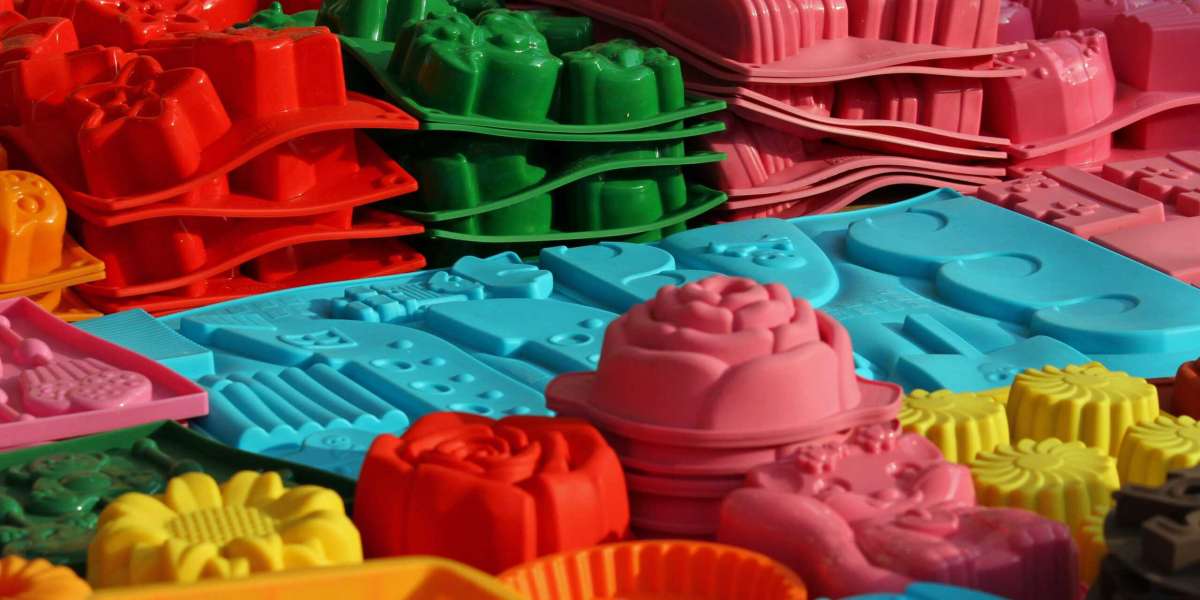Over the past years, silicone molds have gained popularity. But what exactly are silicone molds for a practical, adaptable tool that wins over the hearts of baking aficionados, artists, and DIY? Which aspect explains their popularity? It is high time to get into the root issues of these items, clear misconceptions, tell interesting facts, and trace the history.
What are silicone molds?
Silicone molds refer to the versatile containers, either food-grade or industrial-grade silicone, used to generate many forms of objects through the addition of viscous liquids like resin, wax, chocolate, or cake batter. The container forms the object's desired shape, and once it has set, it can be removed, revealing the "object.".
These molds find applications in various fields such as baking, crafting, soap-making, candle-making, and even in industrial settings. Their pliable and adaptable characteristics facilitate ease of use, particularly for novices.
The Evolution of Silicone Molds
Silicone as a material was first invented in the early 20th century. In 1940, American chemist James Franklin Hyde developed a technique to make silicone durable and flexible.which lead to its wide use in industries. By the 1970s, silicone began using in kitchens as bakeware and tools.
The introduction of silicone molds radically changed baking and crafting, providing an option other than the stiff, rigid metal and plastic molds. Soon, people began to realize the convenience and creativity brought by silicone molds to a variety of projects.
Common Misconceptions About Silicone Molds
Myth: Silicone Molds Are Unsafe
Most people fear whether the silicone materials can be used to produce food products or designs. Food-grade silicone is non-toxic, BPA-free, meaning that it is harmless to use in cooking or baking; it doesn't leach chemicals at high temperatures.
Myth: Silicone Molds Can't Handle High Temps
Silicone molds are very heat-resistant, withstanding 428°F (220°C). Silicone molds therefore are ideal for baking, candy making as well as wax or resin work.
Myth: Silicone Molds Are Always Sticking
Silicone molds, by nature, tend not to stick, and some resins or caramels can be lightly sprayed with oil or a release agent.
Myth: These flowers are fragile and easily broken
Silicone molds are very tough and durable. Their ability to twist and bend without deformation ensures they are long-lasting and reliable.
Worth Knowing About Silicone Molds:
- Various Applications
Silicone molds serve purposes beyond just baking-they are used in soap-making, candle-making, resin crafts, and industrial prototyping.
- Reusable and Eco-Friendly
Unlike single-use plastic molds, silicone molds can be used hundreds of times, making it an extremely sustainable option for the conscious consumer.
Microwave, Freezer, and Dishwasher Safe Most of these silicone molds can be transferred from a freezer to a microwave or oven without an issue. They are also easy to clean and safe for a dishwasher. Available in a wide range of shapes and sizes. It ranges from simple circles and squares to complex designs like flowers or animals. Thus, the available silicone molds are used to create functional as well as decorative products.
Uses of Silicone Molds
Baking: Ideal for cakes, muffins, chocolates, and candies.
Soap-Making: A fun way to make nice-looking handmade soaps.
Candle-Making: Used to make candles in different shapes.
You could use them to make jewelry, coasters, or anything ornamental.
Ice and gelatin molds help create the needed shaped ice cubes or gelatin desserts.
Some Tips for Using Silicone Molds:
- Prepare the Mold: while baking, lightly grease the mold if your recipe needs it. For crafts use a mold release agent for easier demolding.
- Do Not Overfill: Pour the material carefully to avoid spills and ensure perfect edges.
- Allow proper cooling: remove the material once it has cooled or hardened completely out of the mold.
- Clean Properly: Wash molds with warm, soapy water and do not use rough scrubbers.
How to Take Care of Silicone Molds
Taking care of silicone molds is easy:
- Do not use sharp tools that can scratch or poke the mold.
- Store them flat or in a way that prevents them from being squished out of shape.
- Avoid exposing them to open flames because direct heat can damage the silicone.
- Clean silicone molds regularly to get best results.
Conclusion
Silicone molds are useful, easy to use, and strong tools that have brought baking and crafting into a newfound fun for everyone. Yes, even with some myths and misunderstandings, they are still a very safe and practical choice. Be it cake or resin pendant, silicone molds can get your creative ideas running out to reality. With the right care, they can last for many years, making them a useful addition to your kitchen or craft room.












